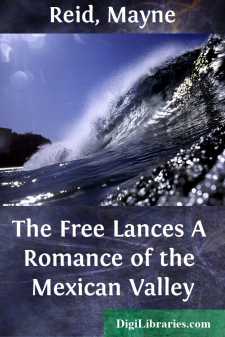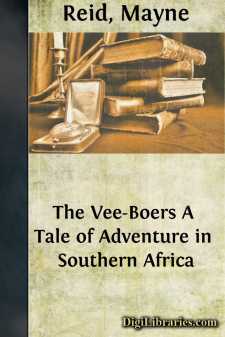Categories
- Antiques & Collectibles 13
- Architecture 36
- Art 48
- Bibles 22
- Biography & Autobiography 813
- Body, Mind & Spirit 142
- Business & Economics 28
- Children's Books 17
- Children's Fiction 14
- Computers 4
- Cooking 94
- Crafts & Hobbies 4
- Drama 346
- Education 46
- Family & Relationships 57
- Fiction 11829
- Games 19
- Gardening 17
- Health & Fitness 34
- History 1377
- House & Home 1
- Humor 147
- Juvenile Fiction 1873
- Juvenile Nonfiction 202
- Language Arts & Disciplines 88
- Law 16
- Literary Collections 686
- Literary Criticism 179
- Mathematics 13
- Medical 41
- Music 40
- Nature 179
- Non-Classifiable 1768
- Performing Arts 7
- Periodicals 1453
- Philosophy 64
- Photography 2
- Poetry 896
- Political Science 203
- Psychology 42
- Reference 154
- Religion 513
- Science 126
- Self-Help 84
- Social Science 81
- Sports & Recreation 34
- Study Aids 3
- Technology & Engineering 59
- Transportation 23
- Travel 463
- True Crime 29
The Boy Hunters
by: Mayne Reid
Categories:
Description:
Excerpt
The Home of the Hunter-Naturalist.
Go with me to the great river Mississippi. It is the longest river in the world. A line that would measure it would just reach to the centre of the earth,—in other words, it is four thousand miles in length. Go with me to this majestic river.
I do not wish you to travel to its source; only as far up as Point Coupée, about three hundred miles from its mouth. There we shall stop for a while—a very short while—for we have a long journey to make. Our route lies to the far west—over the great prairies of Texas; and from Point Coupée we shall take our departure.
There is a village at Point Coupée—a quaint, old, French-looking village built of wood. In point of fact it is a French village; for it was one of the earliest settlements of that people, who, with the Spaniards, were the first colonists of Western America. Hence we find, to this day, French and Spanish people, with French and Spanish names and customs, all through the Mississippi valley and the regions that lie west of it.
We have not much to do with these things at present, and very little to say of Point Coupée, more than we have already said. Our subject is an odd-looking house that, many years ago, stood upon the western bank of the river, about a mile below the village. I say it stood there many years ago; but it is very likely that it is still standing, as it was a firm, well-built house, of hewn logs, carefully chinked, and plastered between the chinks with run-lime. It was roofed with cedar shingles that projected at the eaves, so as to cast off the rain, and keep the walls dry. It was what in that country is called a “double house,”—that is, a large passage ran across the middle of it, through which you might have driven a wagon loaded with hay. This passage was roofed and ceiled, like the rest of the house, and floored with strong planks. The flooring, elevated a foot above the surface of the ground, projected several feet in front of the passage, where carved uprights of cedar-wood supported a light roof, forming a porch or verandah. Around these uprights, and upon the railing that shut in the verandah, clung vines, rose-bushes, and convolvulus plants, that at certain seasons of the year were clustered over with beautiful flowers.
The house faced the river, standing, as I have said, on its western bank—on the same side with Point Coupée. In front was a lawn, some two hundred yards in length, that stretched toward the river, and ended on the low bluff forming its bank. This lawn was enclosed by high rail-fences, and variegated with clumps of shrubbery and ornamental trees. Most of them were indigenous to the country; but there were exotics as well. Among the trees you could not fail to notice the large-flowered magnolia (Magnolia grandiflora), the red mulberry (Morus rubra), the pale-green leaves of the catalpa, the tall tulip-tree (liriodendron), and the shining foliage of the orange.
In contrast with the brighter frondage of these were dark cone-shaped cedars, and spire-like forms of the yew....












